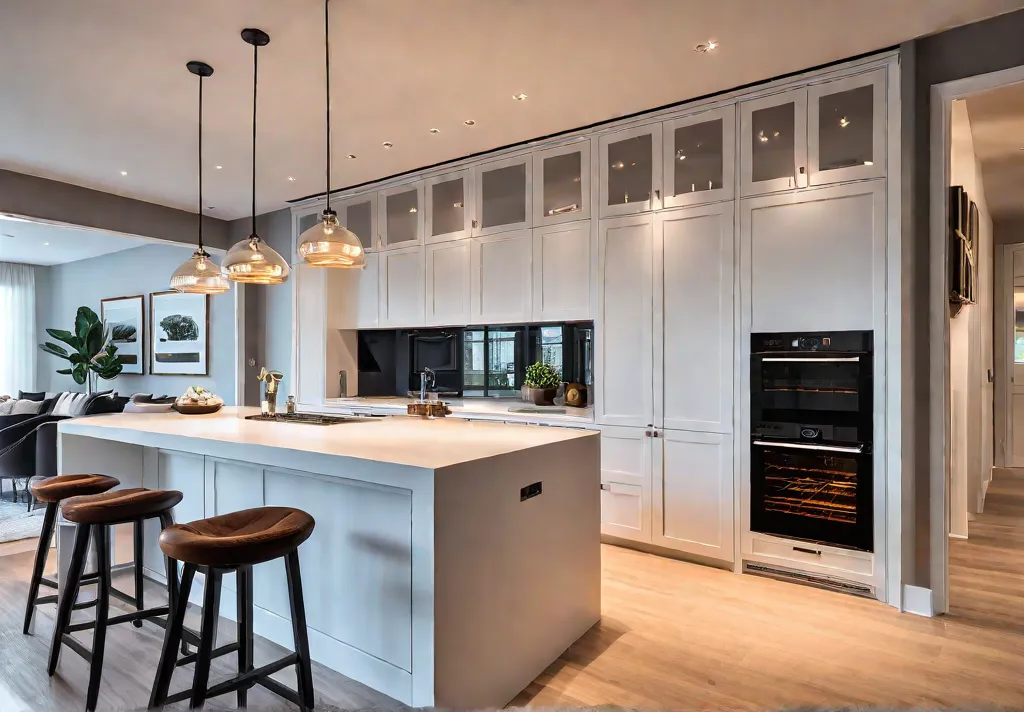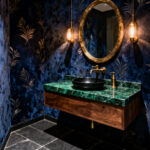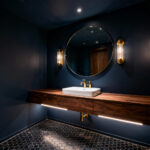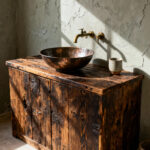Lighting is the unsung hero of the kitchen. It’s not just about illuminating the space – it can make or break your cooking sanctuary’s entire vibe and functionality. Whether you’re a passionate home chef or someone who loves entertaining, getting your kitchen lighting right is crucial.
Imagine chopping vegetables in a dimly lit corner or struggling to read a recipe under harsh, glaring overhead lights. It’s not a pretty picture. Proper lighting can transform a kitchen from a drab, utilitarian space into a warm, inviting area that’s a joy to spend time in.
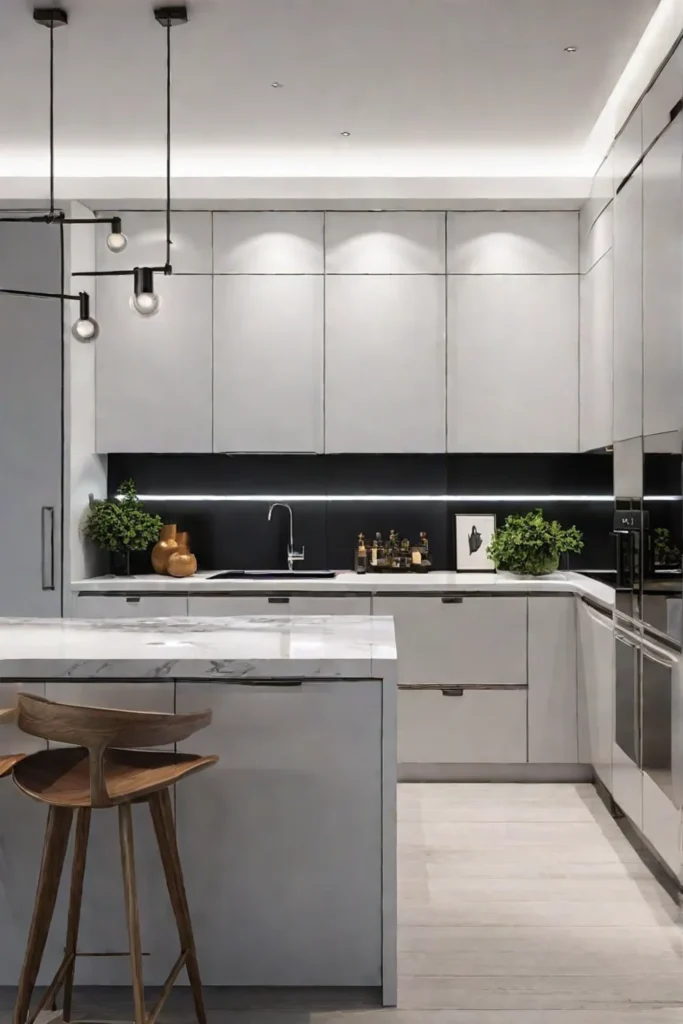
But with so many lighting options, how do you know which ones are right for your kitchen? Fear not, my fellow home design enthusiasts! As a passionate landscaper and decor specialist based in the heart of Los Angeles, I’m here to share my insights on creating the perfect lighting scheme for your kitchen.
Task Lighting
Let’s start with the basics – task lighting. This kind of lighting helps you see what you’re doing, whether you’re chopping, cooking, or cleaning. Good task lighting can make all the difference in the efficiency and safety of your kitchen.
Imagine trying to read a recipe in a dimly lit corner or struggling to see what you’re doing while washing dishes. Frustrating, right? Well, proper task lighting can eliminate those issues. By focusing light exactly where you need it, task lighting helps reduce eye strain and improve visibility, making everyday kitchen tasks a breeze.
It’s not just about functionality, though. Task lighting can also enhance the overall aesthetic of your kitchen. For example, pendant lights hanging over your kitchen island or under-cabinet lighting can create a warm, inviting glow that sets the mood for cooking and entertaining.
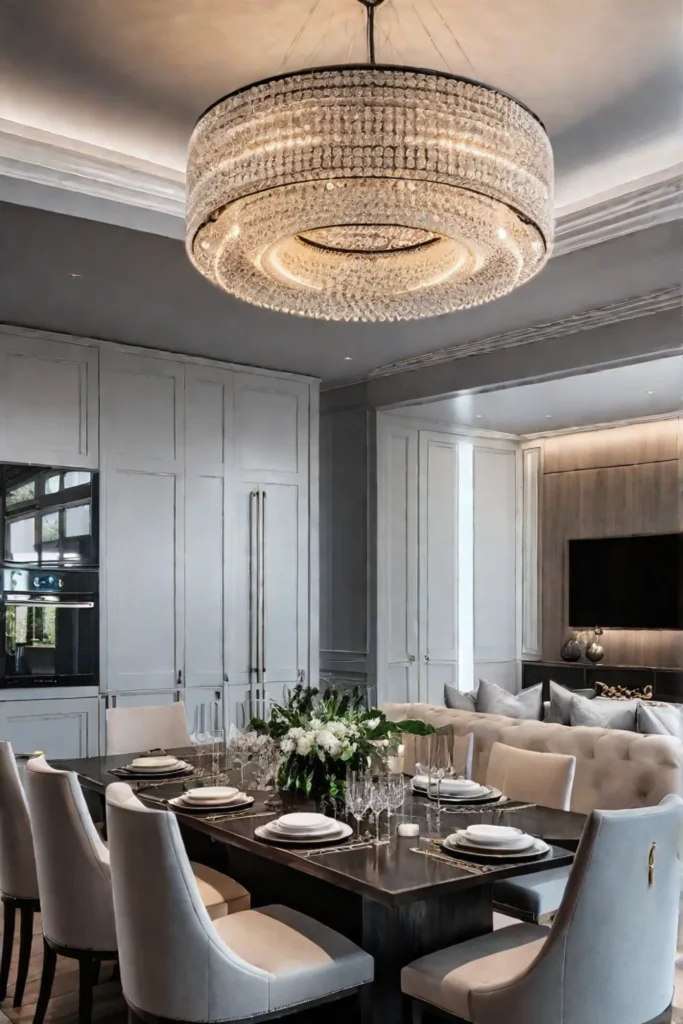
So, where should you place your task lighting? That depends on your kitchen’s layout and workflow. Consider installing pendant lights over your island or countertops or adding discreet under-cabinet lighting to illuminate your prep areas. With the right task lighting, you’ll be chopping, mixing, and cleaning like a pro in no time.
Ambient Lighting
While task lighting is crucial for functionality, ambient lighting sets the tone and mood in your kitchen. This lighting provides a soft, even glow throughout the space, creating a warm and welcoming atmosphere.
Imagine walking into a kitchen bathed in a cozy, inviting light. It’s the space that makes you want to linger, whether sipping your morning coffee or hosting a dinner party. That’s the power of ambient lighting.
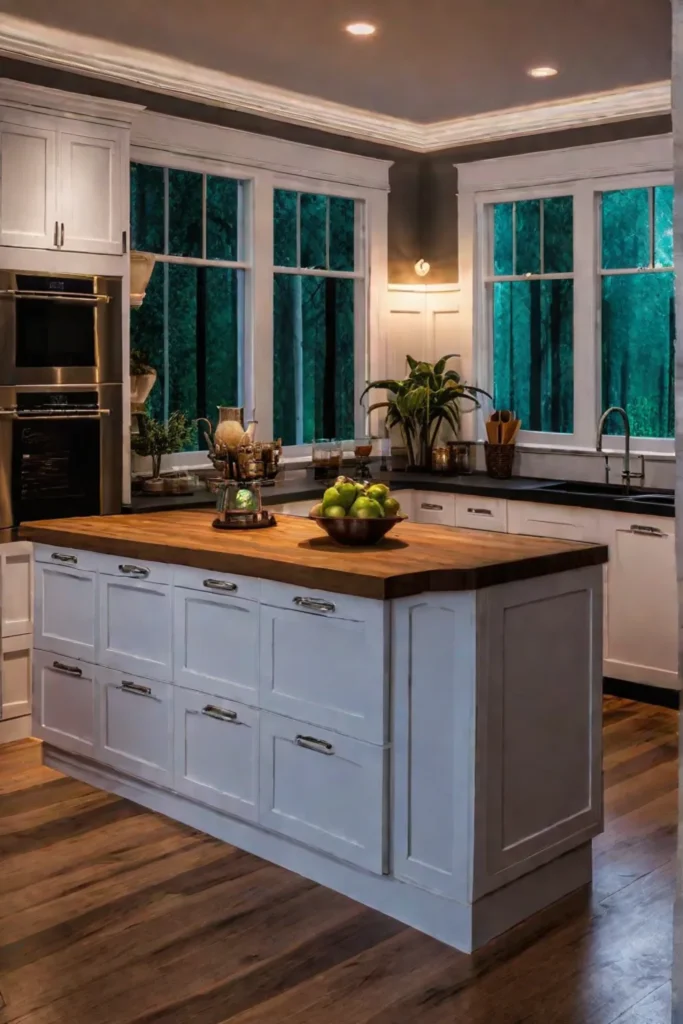
You can create a layered lighting scheme that sets the perfect mood by using a combination of recessed lights, wall sconces, and pendant fixtures. Adjust the brightness and color temperature to suit the occasion – dim the lights for a romantic dinner or crank them up for a lively gathering with friends.
But ambient lighting isn’t just about aesthetics. It can also make your kitchen feel more spacious and open. The right combination of light sources can help visually expand the room, creating a sense of depth and dimension.
So, how do you strike the right balance between task and ambient lighting? It’s all about finding the sweet spot. Experiment with different lighting configurations and adjust the brightness and color temperature until you achieve the perfect blend of functionality and ambiance.
Accent Lighting
Now, let’s talk about the icing on the cake—accent lighting. This type of lighting adds drama and visual interest to your kitchen by highlighting specific features or focal points.
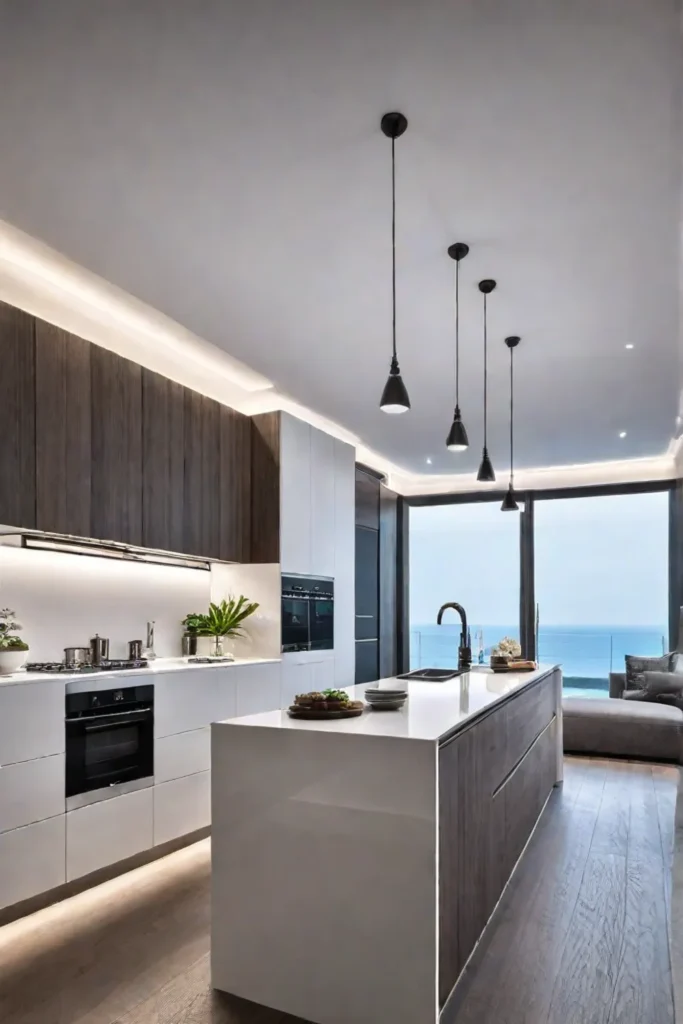
Imagine a beautifully tiled backsplash or a striking piece of artwork. Accent lighting can make these design elements pop, drawing the eye and adding depth to the space. It’s like adding some sparkle and personality to your kitchen.
But accent lighting isn’t just about aesthetics. It can also create the illusion of a larger, more open kitchen. You can draw the eye and build a sense of depth and dimension by highlighting specific areas.
So, how do you incorporate accent lighting into your kitchen? Consider installing under-cabinet lighting to showcase your countertops or track lighting to highlight a stunning backsplash or piece of artwork. You can even use spotlights to create a dramatic focal point, like a statement light fixture or a beautiful piece of pottery.
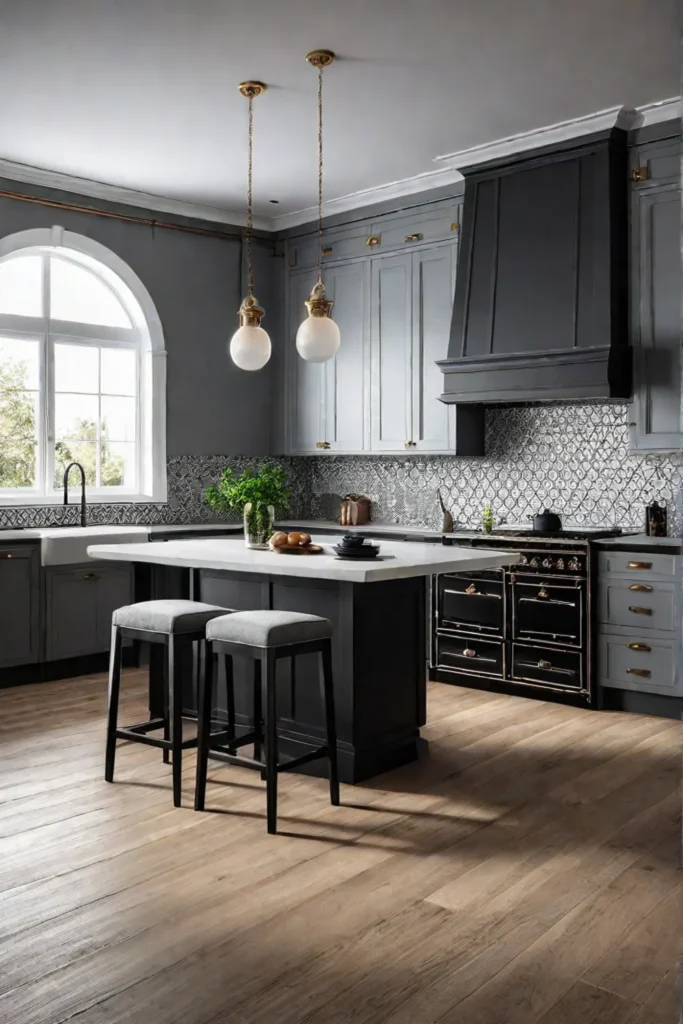
Remember, though, that less is often more when it comes to accent lighting. You don’t want to overwhelm the space or create a cluttered, chaotic look. Instead, highlight the key design elements you want to showcase, and let the rest of the lighting work in harmony to create a cohesive, visually appealing space.
Decorative Lighting
Finally, let’s talk about the icing on the cake – decorative lighting. This is where you can let your personality shine and add a touch of style to your kitchen.
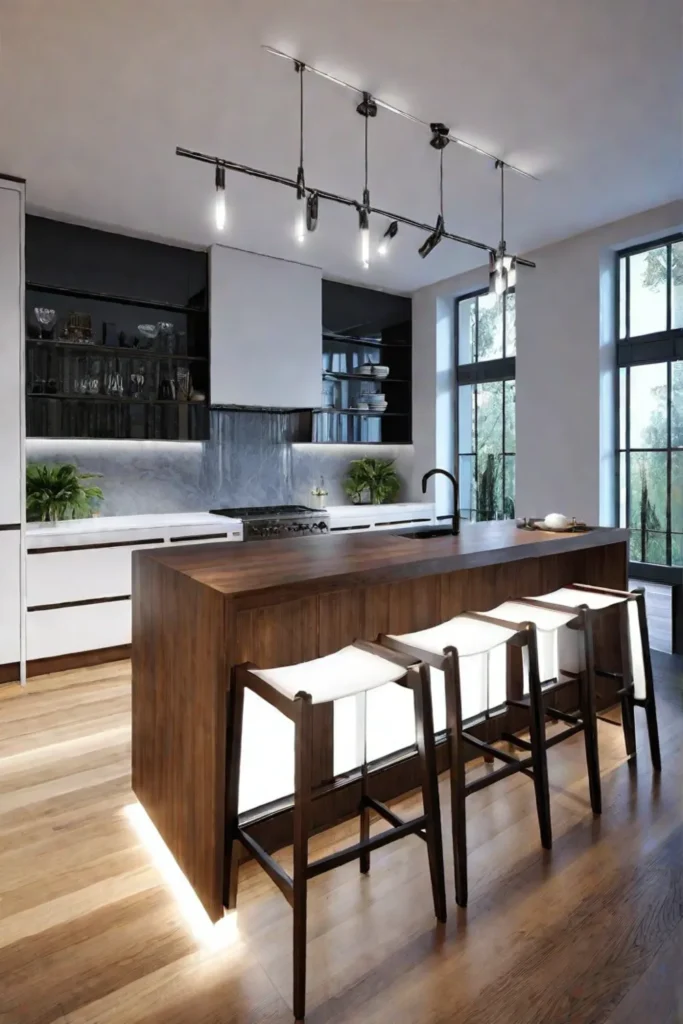
Decorative lighting fixtures can be functional and visually stunning, serving as the centerpiece of your kitchen design. Imagine a gorgeous chandelier hanging above your dining table or a pendant light set that perfectly complements your cabinetry.
But decorative lighting isn’t just about making a statement. It can also create a specific mood or atmosphere in your kitchen. A warm, inviting glow from a lantern-style fixture can make your space feel cozy and intimate, while sleek, minimalist pendants can give your kitchen a modern, sophisticated vibe.
The key is choosing decorative lighting that looks great and seamlessly complements your kitchen’s overall style and aesthetic. Consider the materials, finishes, and shapes of your other design elements, and select lighting fixtures that complement and enhance them.
Remember that you don’t want to go overboard with decorative lighting. The goal is to create a cohesive, visually appealing space, not a cluttered, chaotic one. So, choose your decorative lighting pieces carefully and use them sparingly to achieve the perfect balance.
Lighting Controls
Now that we’ve covered the different types of lighting let’s discuss the importance of lighting controls. These tools allow you to customize and personalize your kitchen lighting to suit your needs and preferences.

Imagine being able to dim the lights for a cozy dinner party or turn on the under-cabinet lighting when you’re prepping a meal. Lighting controls make that flexibility possible, giving you the power to create the perfect ambiance for any occasion.
But lighting controls aren’t just about aesthetics. They can also help you save energy and reduce your environmental impact. Using features like motion sensors or timers, you can ensure that your lights are only on when needed, cutting down on your electricity usage and carbon footprint.
So, what kind of lighting controls should you consider for your kitchen? Some popular options include dimmers, timers, and motion sensors. You can even integrate your lighting controls with a smart home system, allowing you to control your kitchen lighting with a button or a voice command.
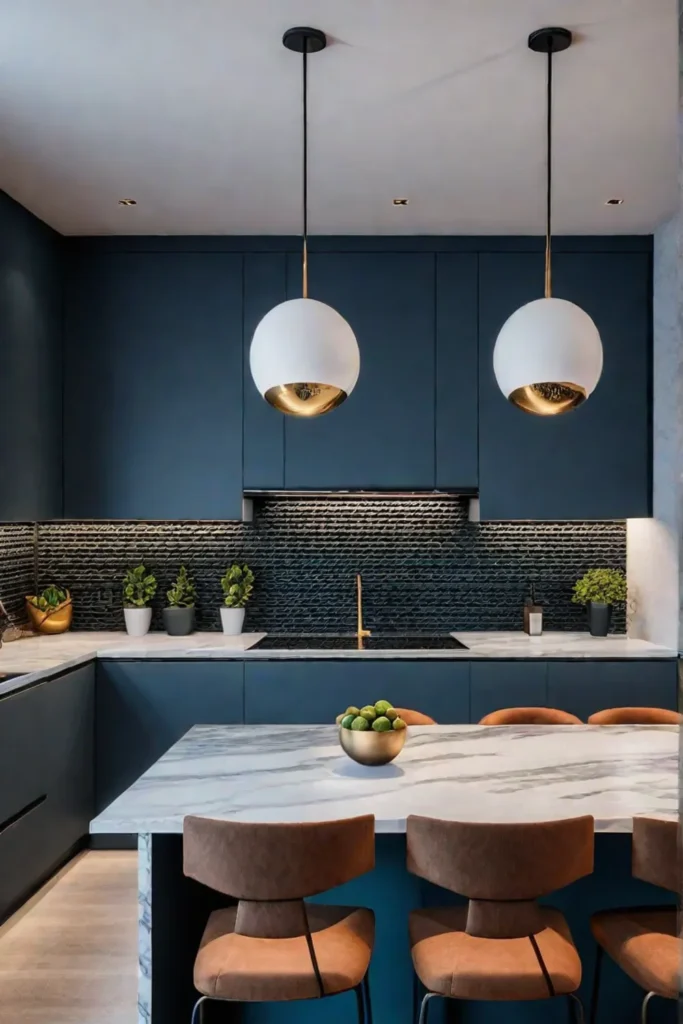
The key is choosing lighting controls that fit your needs and lifestyle. Whether you’re looking for a simple dimmer switch or a fully integrated smart home system, a solution can help you create the perfect lighting experience in your kitchen.
Balancing and Layering Lighting
Now that we’ve covered the different types of lighting and the importance of lighting controls, let’s talk about balancing and layering your kitchen lighting.
Imagine a perfectly lit kitchen – not too bright or dim, but just right. That’s the goal you’re aiming for, and it’s all about finding the perfect balance between task, ambient, accent, and decorative lighting.
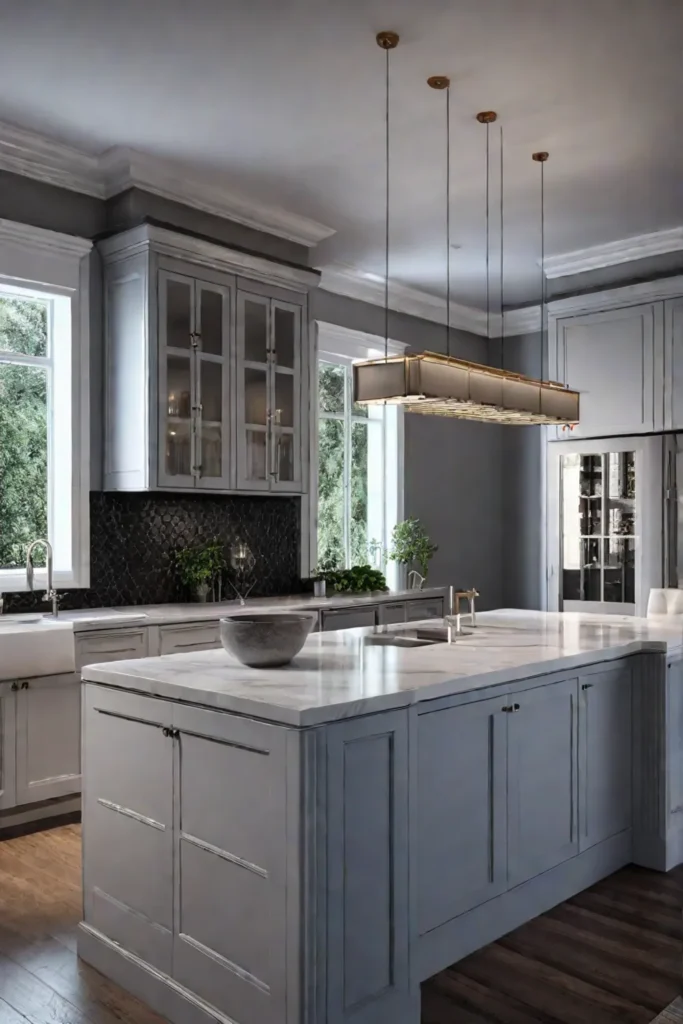
By layering these different types of lighting, you can create a cohesive, visually appealing, functional, and beautiful space. Imagine a kitchen with bright, focused task lighting over the countertops, warm, inviting ambient lighting from recessed fixtures, and a stunning pendant light that serves as the room’s centerpiece.
But it’s not just about the types of lighting you use. It’s also about the placement and intensity of each light source. You want to create a harmonious blend of light that illuminates your kitchen without overwhelming the space.
So, how do you achieve that perfect balance? It’s all about experimenting and finding the best kitchen layout and design. Start by assessing your lighting needs – where do you need task lighting, where do you want ambient lighting, and where can you use accent or decorative lighting to add a touch of personality?
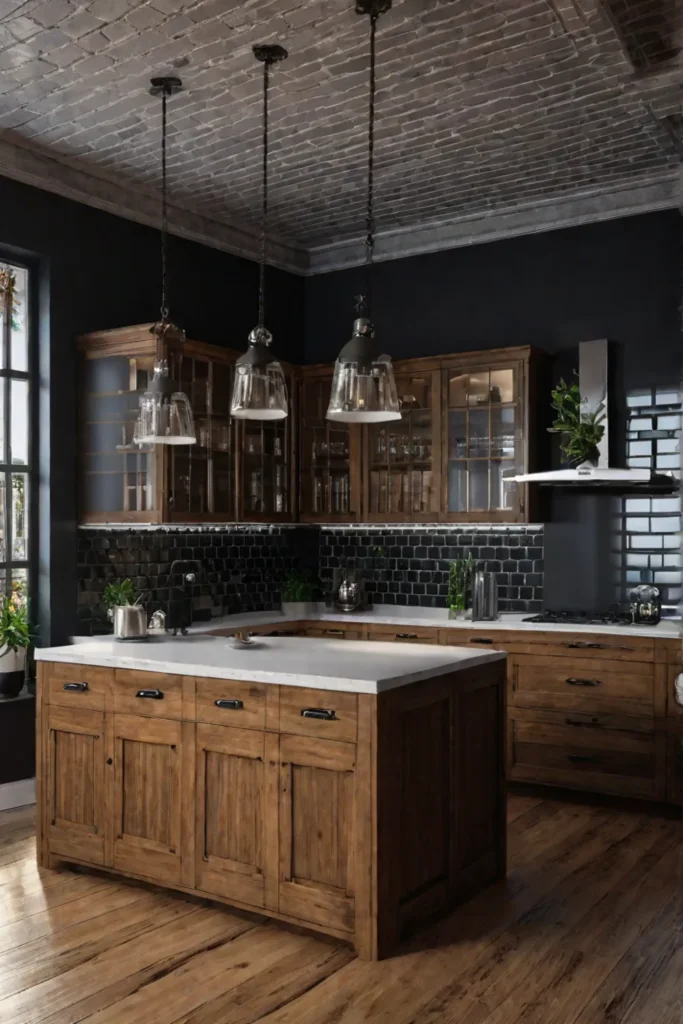
Once you’ve identified those areas, start layering your lighting sources. Use a combination of recessed lights, pendant fixtures, and under-cabinet lighting to create a cohesive, well-lit space. Adjust each light source’s brightness and color temperature until you find the perfect balance.
Remember, the goal isn’t to create a bright, overly-lit kitchen. Instead, aim for a warm, inviting space perfectly illuminated for functionality and aesthetics. With a little experimentation and a keen eye for design, you can create a kitchen that’s truly the heart of your home.
Customizing Lighting for Your Needs
Let’s discuss the importance of customizing your kitchen lighting to suit your specific needs and preferences.
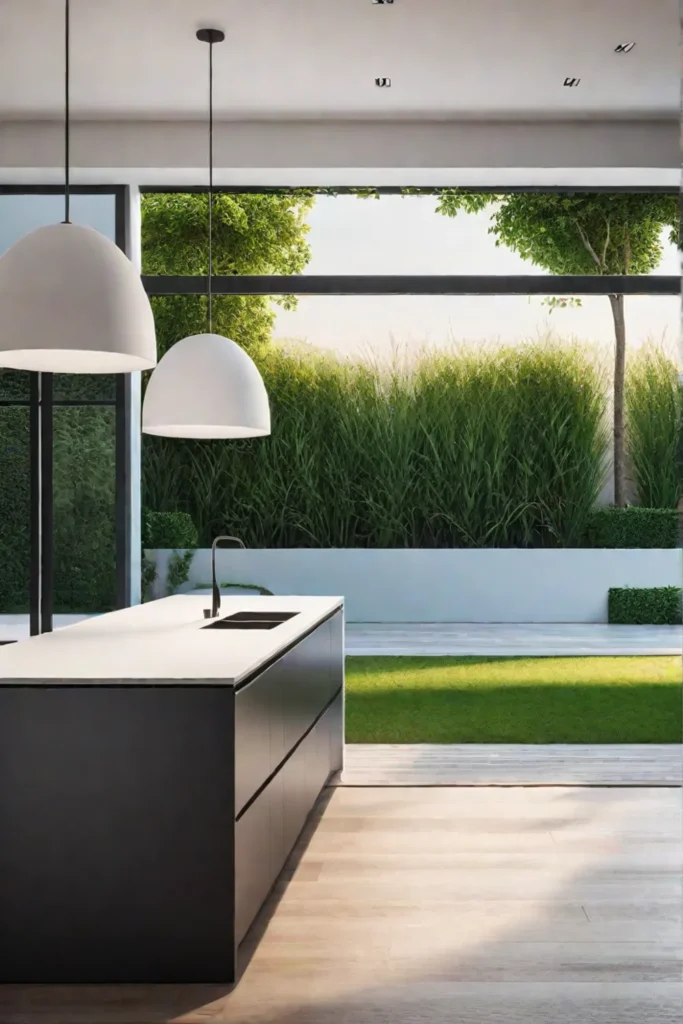
After all, no two kitchens are exactly alike. Each one has its own unique layout, design, and lifestyle requirements. That’s why it’s important to tailor your lighting to your needs rather than just going with a one-size-fits-all solution.
Think about it – if you’re an avid home chef, you might need more focused task lighting over your prep areas and stove. But if you’re more of an entertainer, you might prioritize ambient lighting and decorative fixtures that create a warm, inviting atmosphere.
By customizing your kitchen lighting, you can enhance the space’s functionality and infuse it with your personal style and preferences. Maybe you love the cozy glow of warm, Edison-style bulbs, or perhaps you’re drawn to sleek, minimalist pendants’ clean, modern look.
The key is to take the time to assess your needs and preferences and then work with a lighting designer or contractor to create a custom solution that fits your kitchen perfectly. This might involve adjusting the placement of your light sources, experimenting with different bulb types and color temperatures, or even incorporating smart home technology to give you more control over your lighting.
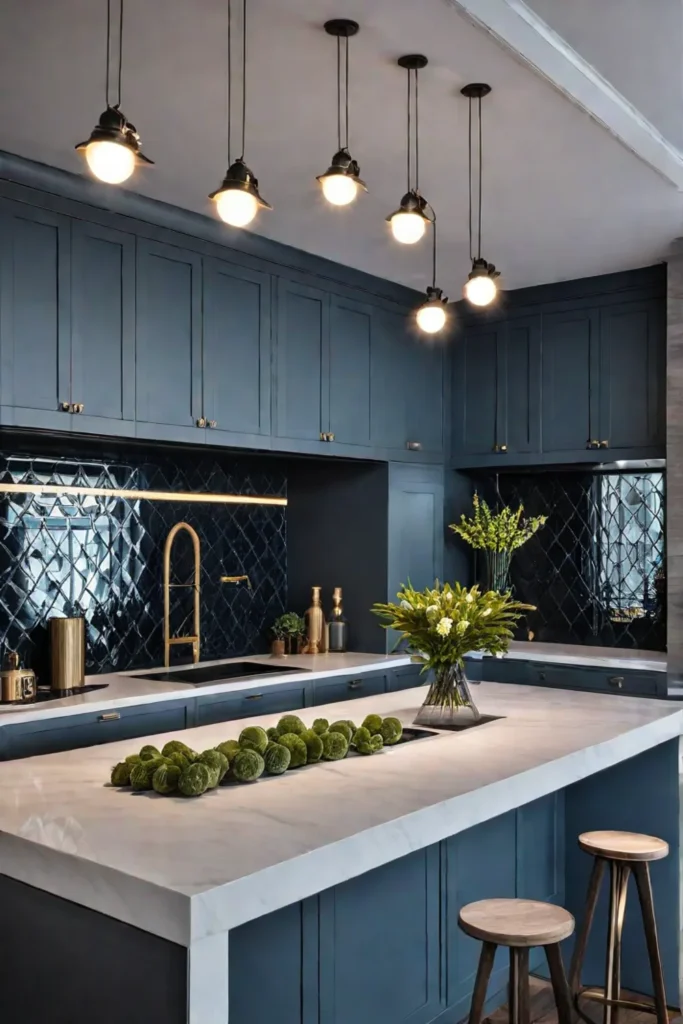
But the payoff is worth it. A custom lighting solution can transform your kitchen, making it more functional, beautiful, and reflective of your unique style and personality. And let’s be honest – who doesn’t want a kitchen that’s both practical and Instagram-worthy?
Lighting Trends and Innovation
As a design enthusiast, I’m always watching the latest trends and innovations in kitchen lighting. And let me tell you, the future is bright (pun intended)!
From smart home technology to energy-efficient LED bulbs, the world of kitchen lighting is evolving at a breakneck pace. And as a designer passionate about sustainability and innovation, I couldn’t be more excited about it.
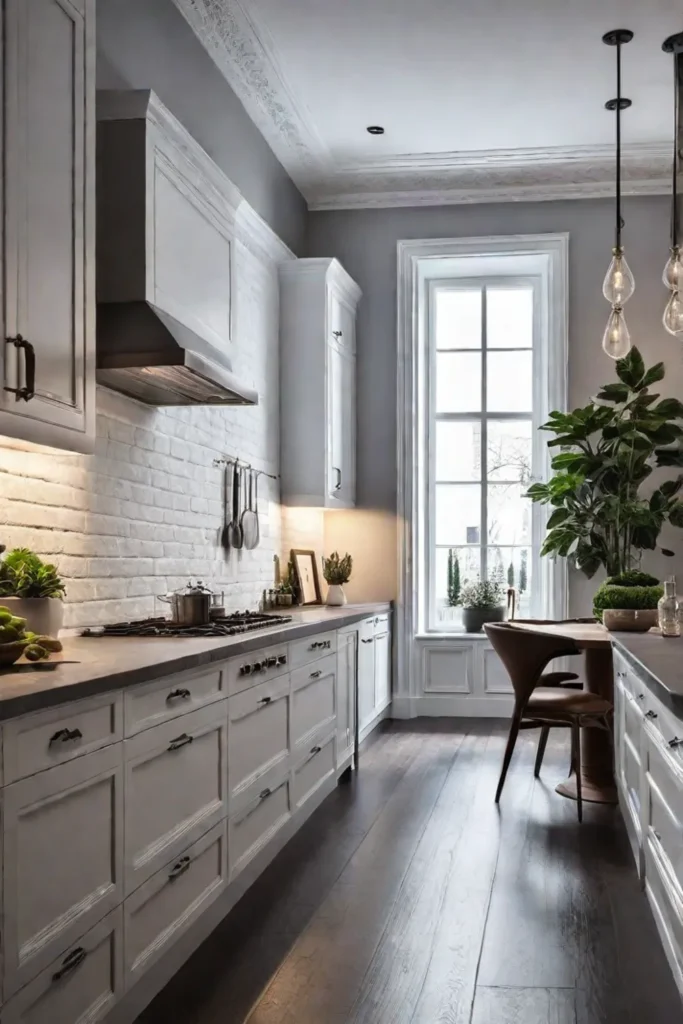
Take smart lighting systems, for example. These cutting-edge technologies allow you to control your kitchen lighting with a button or a simple voice command. Imagine being able to dim the lights for a romantic dinner or turn on the under-cabinet lighting as soon as you walk into the kitchen.
And then there’s the rise of energy-efficient LED bulbs. These modern marvels save you money on your energy bills and offer a level of customization and flexibility that was unheard of just a few years ago. You can now choose from a wide range of color temperatures and brightness levels to create the perfect ambiance in your kitchen.
But it’s not just about the technology – the design possibilities are endless, too. From sleek, minimalist pendant lights to statement-making chandeliers, the options for decorative kitchen lighting are limitless. With the rise of integrated lighting controls, you can create truly personalized lighting schemes that reflect your unique style and preferences.
So, what does the future hold for kitchen lighting? It’s a bright and exciting one. As technology continues to evolve and designers push the boundaries of what’s possible, I can’t wait to see what new and innovative lighting solutions emerge to help us create the kitchen of our dreams.
Conclusion
In conclusion, the key to creating the perfect kitchen lighting is finding the right balance and customizing your solution to fit your unique needs and preferences.
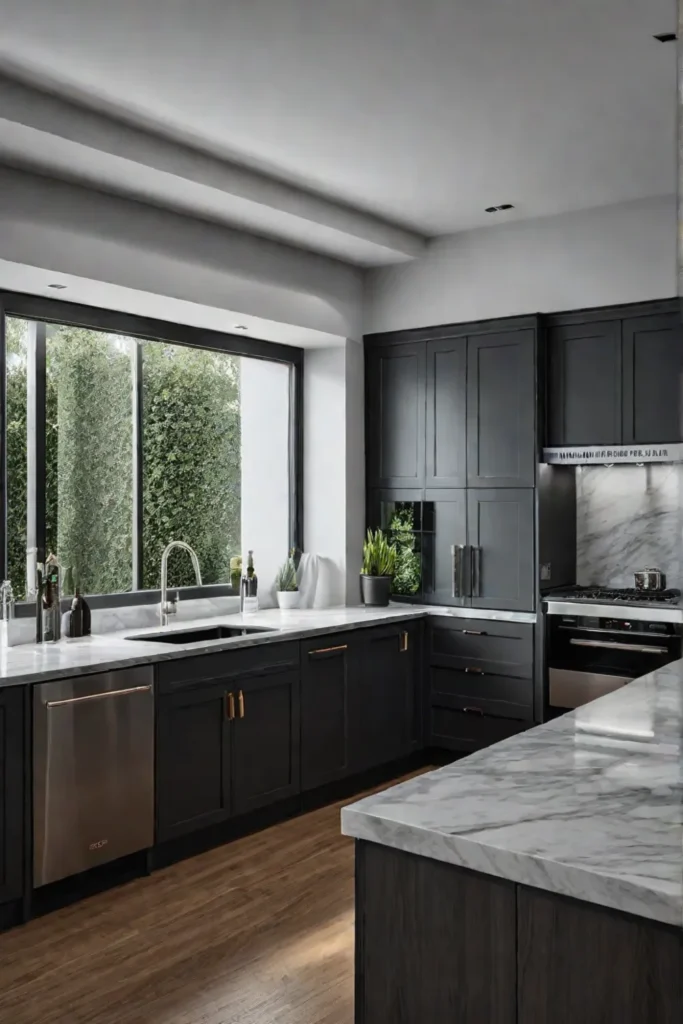
Whether you’re focused on task lighting to make your cooking and cleaning more efficient, or you’re looking to create a warm, inviting ambiance for entertaining, a lighting solution can help you achieve your goals.
By layering different types of lighting – from task to ambient to accent and decorative – you can create a cohesive, visually appealing, functional, and beautiful space. With the help of smart lighting controls, you can take your kitchen lighting to the next level, giving you the flexibility to customize and personalize your space like never before.
So, what are you waiting for? Start exploring the world of kitchen lighting and discover the transformative power of the perfect lighting solution. Your dream kitchen is just a few light bulbs away!
